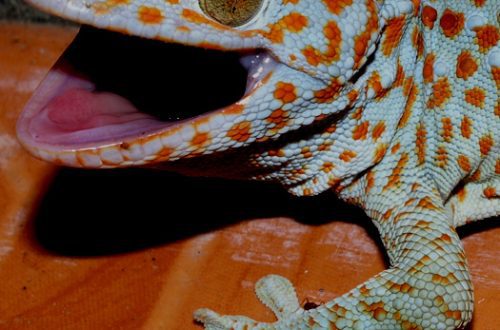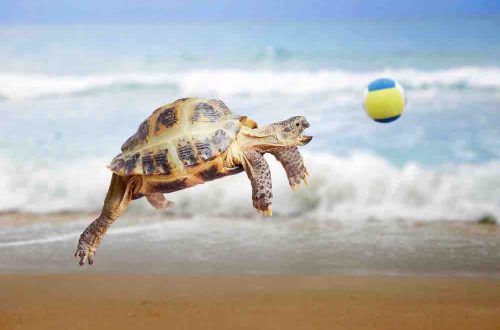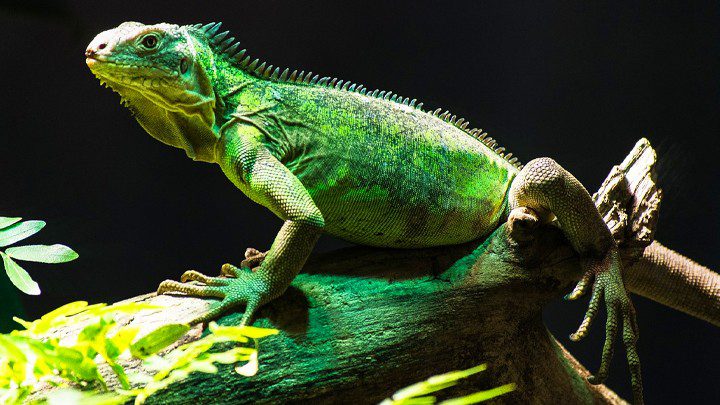
Iguana maʻamau: mālama a mālama i ka home
The green or common iguana seems to be known to absolutely everyone. It attracts attention with its impressive appearance and diet – it is absolutely herbivorous.
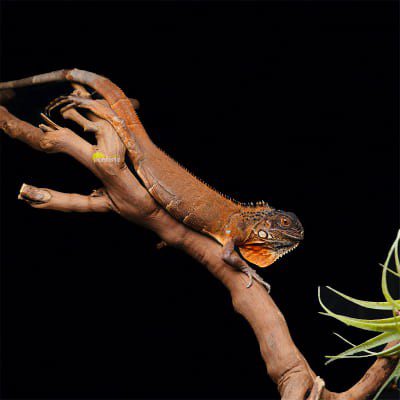
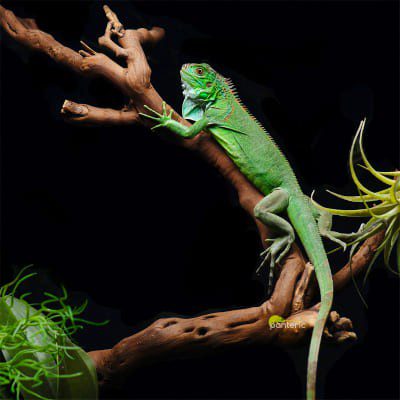
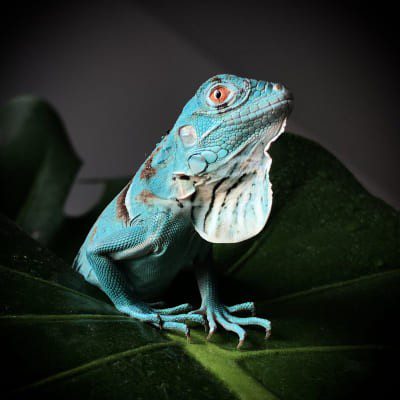
In this article, we will tell you how to keep an iguana at home and take care of this interesting and rather massive lizard. The iguana is the largest representative of the family, the length of a lizard with a tail can reach 1,5-2 meters, and the average weight is 1,5-4 kg.
Despite its name, the green iguana is not always green. Color largely depends on age and habitat. On sale you can find blue, red, green and even yellow iguanas.
Common iguanas live in Central and South America. Its original natural range covers a significant area from Mexico to Brazil and Paraguay, as well as the islands of the Caribbean. The biotope is diverse – it is dense, humid and semi-humid, tropical forests, dry mangroves, and open coastal marine zones.
Contents
Mea Paʻa Paʻa
- Iguanas, like any other reptile, cannot be kept without a terrarium. To keep an ordinary iguana, you will need a vertical-type terrarium with well-closing doors. For a baby and a teenager, a terrarium of 45 * 45 * 90 cm or more is suitable, for adults, a terrarium three to four times larger will be required.
- The terrarium must be heated with heating lamps. A lamp with a lamp is installed on one side of the terrarium above the snag where the iguana will sit, the temperature at this warm point should be 35-38 ° C. In the coldest corner, the temperature should be at least 24 ° C. The lamp is installed so that, while warming, the animal cannot accidentally get burned, so all lighting devices are installed outside the terrarium, above the ventilation grid. The temperature must be monitored with a thermometer. At night, additional heating is not required if the temperature in the terrarium does not fall below 18 degrees.
- The woody substrate is perfect as a substrate in an iguana terrarium, it holds moisture well and allows the animal to drip it.
- The free space is filled with wide and stable snags, vines, live or artificial plants, behind which the iguanas can hide.
- As lighting, it is required to install lamps of the full spectrum: daylight, ultraviolet. Particular attention should be paid to ultraviolet lamps, without them the animal will not produce vitamin D, thereby calcium will not be absorbed, which will lead to illness. All light lamps work during the day 12-14 hours and are switched off at night. It is desirable to install night lighting in the terrarium, for example, the Full Moon lamp. This will reduce your pet’s stress associated with a sudden blackout and allow him to find a secluded place to sleep.
- The iguana loves to swim, a spacious drinking bowl is placed in the terrarium, in which it could fit entirely. Humidity in the terrarium should be high: from 70 to 90%. To maintain it, the terrarium is sprayed with a spray bottle several times a day (use distilled or osmotic water to avoid plaque on the walls). For convenience, you can install an automatic rainfall system. The soil should be moist, but water should not accumulate at the bottom. The terrarium should not have a swamp. Use a hygrometer to control humidity.
- Since the terrarium maintains high humidity, in order to avoid various skin diseases, use the terrarium only with a proven ventilation system that promotes good air exchange and prevents fogging of the windows.
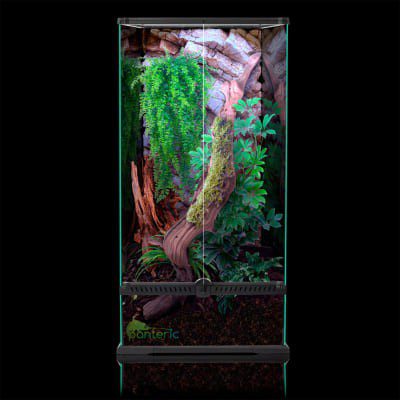

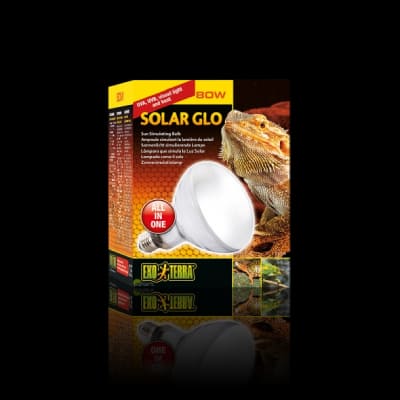
e ai ana
As we wrote earlier, the diet of an ordinary iguana consists of 100% plant foods. An adult animal should be fed once a day, babies are fed several times a day. The basis of the diet is all kinds of salads and greens. Offer dandelions, clover, alfalfa, spinach, all kinds of sprouts, lettuce, beet greens, radishes, pumpkins, etc. As an addition to the diet, vegetables are given: zucchini, eggplant, carrots and more. Vegetables are finely chopped or grated.
Several times a week, the iguana needs to be offered fruits and berries: apples, pears, peaches, strawberries, currants, and so on. For young iguanas, try to choose a diet high in protein, suggest: green beans, pea pods and beans. It is necessary to add special top dressing for reptiles, vitamins and calcium to the feed.
Food is served during the daytime so that after eating the iguana can warm up and digest it. The amount of food offered should be such that the iguana will eat within an hour. Uneaten food is removed, as cooked salads quickly deteriorate.
Do not give iguanas cold food from the refrigerator, defrost frozen foods and warm to room temperature.
Many iguanas often refuse to eat something, why? They could get used to something specific. Still persistently offer other products, sometimes it will take a long time before the iguana tastes them. Try to create a varied diet for your pet.
Do iguanas drink? The iguana absorbs the main moisture from food, juicy greenery. Don’t be alarmed if you rarely see her drinking. Bathe the iguana, this will help her make up for the lack of water in the body, in the terrarium there should always be access to fresh drinking water. Spray the terrarium and the leaves, the iguanas will lick the dripping water.
Young iguanas who do not yet know how to drink from drinkers on their own should use a waterfall or drip system.
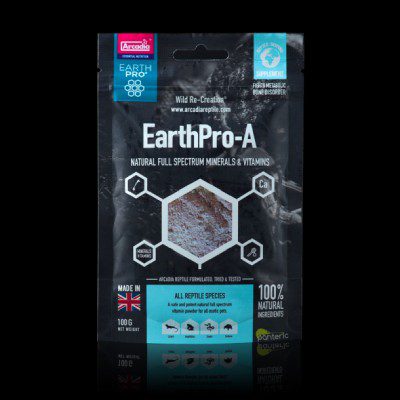

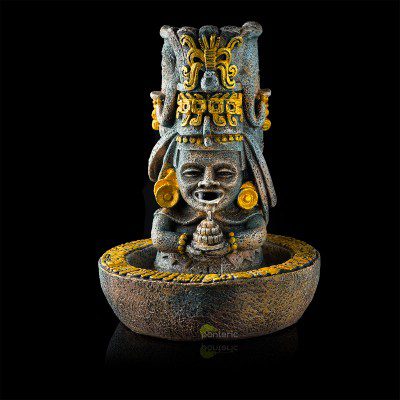
Ka hana hou
The breeding season starts in January or February. During the mating season, males become aggressive towards nearby rivals. During courtship, males sniff and lightly bite females on the neck. Pregnancy lasts about 65 days, during this period they are characterized by a sharp decrease in appetite, up to complete failure. Pregnant females need to be fed abundantly and given more minerals and supplements for good egg formation. About a week before laying, the female becomes restless, begins to dig, looking for damp, dark cool places. The terrarium should have a sufficiently large layer of digging soil so that it is convenient for the female to dig a hole for eggs.
Egg laying can take up to a week. Eggs are transferred to a special substrate for egg incubation. Such a substrate does not grow moldy and holds moisture well. The eggs are transferred to an incubator where they are incubated for about 70 days.
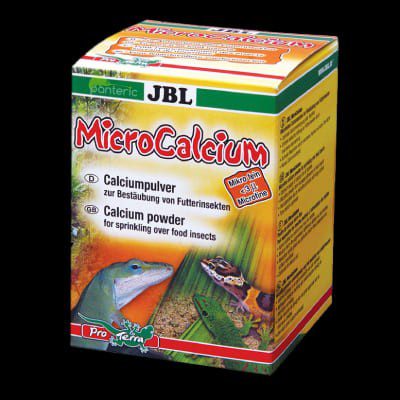

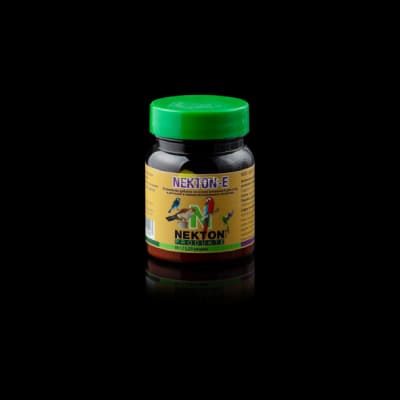
ʻO ke ola a me ka mālama
In nature, iguanas live for about 8 years. At home, it is longer: 15-20 years, but only under the right conditions.
They keep ordinary iguanas one by one, this is due to the fact that they can be aggressive and can easily cripple each other.
iguana diseases
If you create and maintain the right conditions for ordinary iguanas, then they will not get sick. If you suspect any disease, call our store and we will advise you.
What health problems might you face?
- Calcium deficiency: leads to curvature of the spine and deformation of the limbs, so it is very important to give vitamin and mineral supplements with each feeding. The UV lamps must be replaced within the specified intervals, the service life of such lamps is approximately one year. On our website there is a convenient lamp replacement reminder service, with which you do not have to remember the date of installation of the equipment.
- Digestive issues: Only use fresh, proven foods, don’t experiment with unknown greens, remove uneaten food before it has time to spoil and the iguana decides to feast on it. Let the animal fully warm up after eating and calmly digest it.
- Dehydration: Bathe your iguana up to several times a week, especially young ones, and keep the cage moist.
- Skin problems: poor shedding and fungus. If there is insufficient humidity in the terrarium, the iguana will not shed well. The remaining pieces of molting on the body, tail or fingers must be removed after soaking in water. Fungus can occur due to poor ventilation in a terrarium, so only choose terrariums with a proven ventilation system.
If you notice strange spots on your body, contact our specialists in the veterinary chat in the application, and we will help you draw up a treatment plan.
- Diseases caused by improper diet: gout, metabolic disorders, kidney failure, nephrolithiasis. It is important not to feed the iguana with food that is not intended for it, many recommend feeding young iguanas with insects or animal protein, they gain weight faster this way, but this is harmful and unnatural for them and will simply kill them by 4-5 years of age.
- Iguana sneezes: excess salts in the body of the iguana eliminates sneezing, this is normal, since herbivorous lizards have special glands with which they get rid of excess salts in the body, while maintaining the necessary moisture.
Kūkākūkā me ke kanaka
Adult tame iguanas are amazing pets, they are affectionate, calm, love to sit on their hands or explore the room. In order for your iguana to become tame, you need to contact it from early childhood: feed it from your hands, lure it with food from the terrarium, do not frighten or offend.
At first glance, iguanas seem to be very friendly. Not a predator means it doesn’t bite, but that’s not always the case. Iguanas can defend themselves well and harm humans. Especially during the rut (reproduction period). Individuals that are “not in the mood” usually turn sideways and defend themselves with their tail, some may bite. The bite of an adult iguana will be quite painful.
It is important to learn to understand when the animal is not averse to talking, and when it is better not to touch it and leave it alone, because the size of these reptiles is not small.
In warm weather, the iguana can be taken outdoors with you. Some put rodent harnesses on them and walk the iguanas on the lawn like dogs.
On our YouTube channel there is a video about the content of ordinary iguanas, you will see what an adult looks like, kids, how to properly equip a terrarium for them.
From the video you will learn the basic facts about iguanas: how to keep them, what kind of care they need and whether they really are so simple and friendly.
You can buy an ordinary iguana in our Panteric pet store. Only those animals in the state of health of which there is confidence themselves go on sale, the specialists of the pet store will prompt and select for you all the necessary equipment for keeping and caring for this lizard. If you have any questions or problems, our veterinarians will answer and help with their elimination. At the time of departure, you can leave your pet in our hotel, which will be monitored by our specialists.
ʻO ka ʻatikala e pili ana i nā ʻano ʻano o ka Cape monitor lizard: kahi noho, nā lula mālama a me ka manaʻolana ola.
Pehea e koho ai i kahi terrarium a me nā mea pono e hana i nā kūlana ʻoluʻolu no kāu holoholona? E heluhelu i kēia ʻatikala!
Pehea e hana ai i nā kūlana kūpono no ka Toki gecko? E kamaʻilio e pili ana i ka terrarium, kona ʻike, ka meaʻai a me nā lula no ka mālama ʻana i ke olakino.




